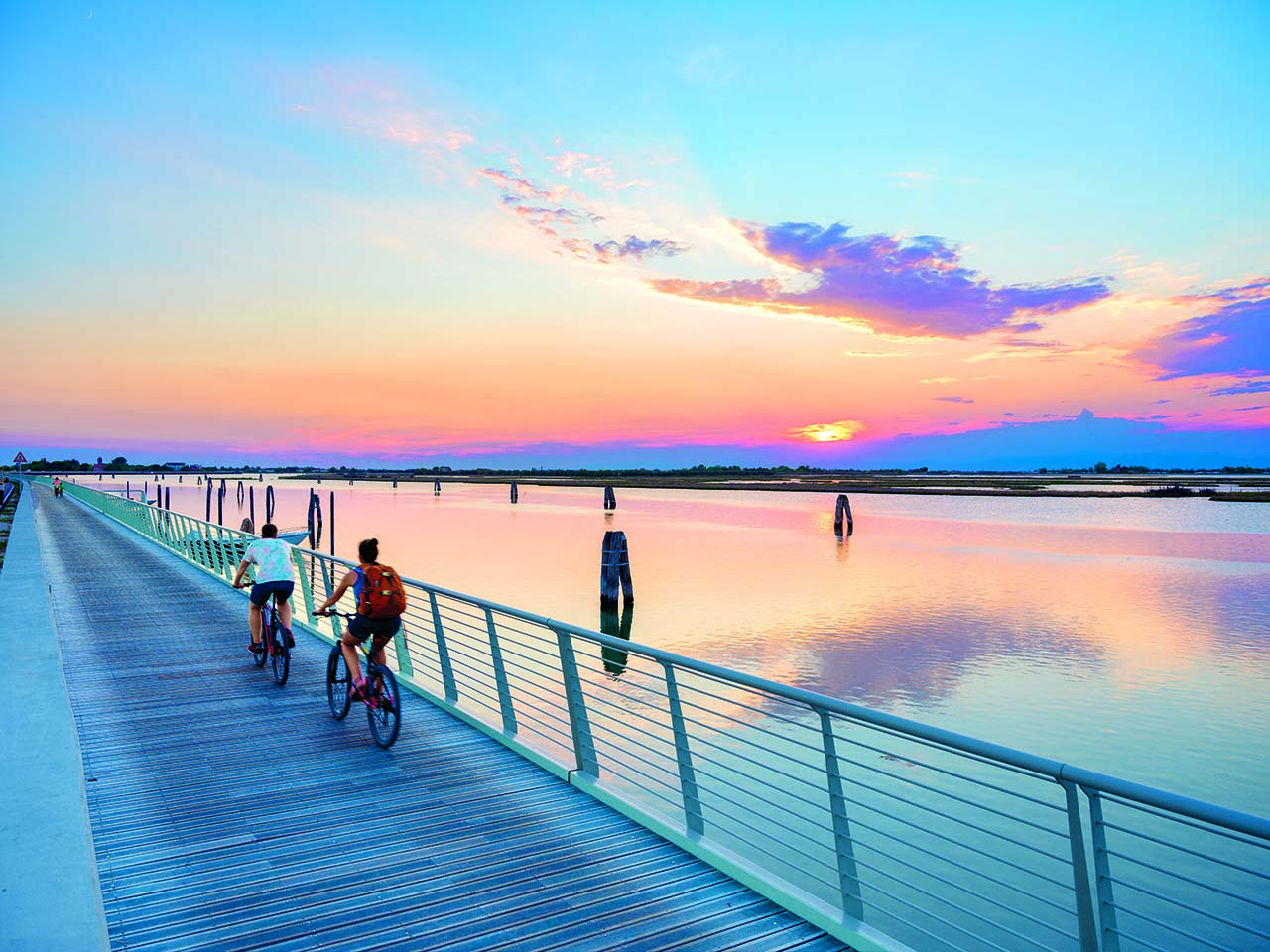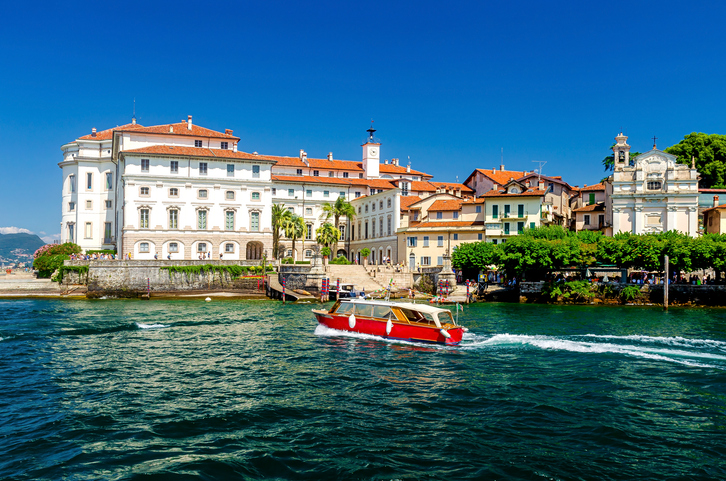Venice my love. But can we love the city and desire the silence of nature, the gentle hypnosis of the lagoons and uninhabited dunes of the Adriatic? The path exists. Because the Serenissima brings together stories of beauty and work, of defense of the environment and sustainability. And Eastern Venice is part of this ecosystem: a space composed of many places and dimensions. Discover.
The journey on the water begins Sabbioni Point: direct lines depart from here and dock in San Zaccaria in just over 35 minutes. The slow alternative is to get to Tréporti (ticket office) and wait for line 12. From there begins a route among the islands of the northern lagoon which, in about an hour, arrives in Venice, at the dock of Basically new.
The boat first goes along the Mose barrier, designed to defend Venice from the tides, then passes the island of Sant'Andrea with the 16th century fort, then passes the Parco dei Giardini di Sant'Elena with the Lido at the 'horizon. , finally landing in the San Marco basin.


Stop in Venice
The city, as always, offers endless attractions and during these months speaks the language of exploration. The exhibition The worlds of Marco Polo. The Journey of a 13th-Century Venetian Merchantuntil September 29, 2024 Ducal Palaceis a great opportunity to learn more about the life of the illustrious traveler in the 700 years since his death.
Then, until November 24, there is the Art Biennaleby title Strangers everywhere – Strangers everywherewith more than 300 artists involved and 90 international participations.
Outside the perimeter of the Arsenale and the Gardens, there are numerous installations and projects: from the work of Christoph Buchel has Ca' Corner della Reginaat the Prada Foundation, a Pierre Huyghé has Pointe de la Doganahas Willem de Kooning has Academy Galleriesthrough a series of initiatives involving artists from five continents.
READ ALSO: Eastern Venice: the new frontier to explore in slow motion
Silence and untouched nature a stone’s throw from Venice
However, when evening falls, we take the ferry again, following the slow swaying of the waters, to leave the city and return to the north, where another journey begins: this time on the road, to discover an amphibious territory , shaped by the hands of man, made up of numerous small polders, areas of land reclaimed from the sea and marshes.
Writers and poets have sought a living and original nature in the silence of these lagoons. They wanted to feel the breath of earth and water. Because slowness is an opportunity: to stop is to truly come into contact with the spirit of the place.
The journey to Eastern Venice has its own rhythm. Here the horizon is flat and we slide in a zigzag between waters and jetties, while the road draws the profile of the seaside villages which overlook the Adriatic and, further inland, in the middle of the plain, set on the grass, they emerge like cathedrals and water pumps.


The Cavallino coast
If from the sea you can see the gentle movement of the dunes that defend the coastal coast, from the interior it is possible to enjoy the suggestion generated by the coastal landscape. Pordelio, the cycle path cantilevered above the Cavallino Treporti Lagoon.
Here you can rent bikes and explore natural territories on the border between land and water, immersing yourself in the past of the first Roman settlements of Lio Piccolo.
Those who choose a kayak, canoe or electric boat set off to explore the canals, wildlife and fishing valleys. The cuisine also offers suggestions of centuries-old passages between East and West, mixing sweet and savory. And the wet, sandy lands of Cavallino are small deposits of Slow Food Presidia with poor horticultural plants, herbs, fruits and fish.
Jesolo: between beaches and park
The horizon is definitely changing Jesolo where, a few meters away, you will find a building designed by Carlos Ferrater, a hotel designed by Richard Meier and a tower designed by Gonçalo Byrne and Ferreira Nunes.
The air you breathe in the beach bars or, in the evening, in the trendy clubs and big-name window displays, is perfect for those who love nightlife.
But there are not only kilometers of beaches: in Jesolo, nature surprises with Pine Forest Park, on 16 hectares of large trees and vegetable gardens. And we are surprised to discover that this coast, which includes Eraclea and reaches Bibione, is the first tourist area in the country in terms of number of presences.
San Donà di Piave
On the river route, the coast recedes and Eastern Venice becomes a city again. The name of San Donà di Piave fills the pages of history, but the present is made of greenery, modernity and a coherent project to give an identity to a territory which was the outpost of modern land development.
In fact, the Muba museum completely renovated in 2018, between material and intangible testimonies, landscape and environment, stories and traditions.
The value of art as an instrument of urban identity is, however, expressed in Architectural Sculpture Parkwhich brings together works, among others, by Bruno Munari and Aldo Rossi, Sol Lewitt and Alessandro Mendini: creative objects that live outside and “transform” with the seasons.
READ ALSO: Beyond Venice: the most evocative experiences to live in the lagoon
The Caorle lagoon
From here, the Piave cycle path offers an ideal route to reach Caorleone of the most famous seaside villages, which still retains the charm of some small fishing villages with colorful houses and characteristic trattorias.
In the historic center, the narrow streets bring together the buildings up to the Cathedral of 1038, with its beautiful cylindrical bell tower.
Private houses and small workshops, tiny living and social spaces make the city one of the most exciting places on this route. And, in summer, concerts and comedies are organized in the small squares.
Behind the center, facing the sea, we encounter the cliff which leads to the sanctuary of the Madonna dell'Angelo, on a promontory which plunges into the Adriatic, a pilgrimage destination.
Every two years, with revision CliffViva, the rocks become a place of sculpture thanks to the work of artists from all over the world. There is then a point where the sea meets fresh water: to access it, from the center of the village, with a flat boat, you go along the canals to land at the casoni, or on two wheels you travel the beautiful cycle path.
The means change, but not the end: reeds and woods, Spartan refuge for fishermen and their families, the casoni are today small places of the heart, to be inhabited even if only for a dinner by the sea. the water. Perhaps by listening to these stories which ended up in the novels of Hemingway, in love with Venice and these lagoons.
SEE ALSO: Treasures of the Veneto: 20 gems of art and architecture

